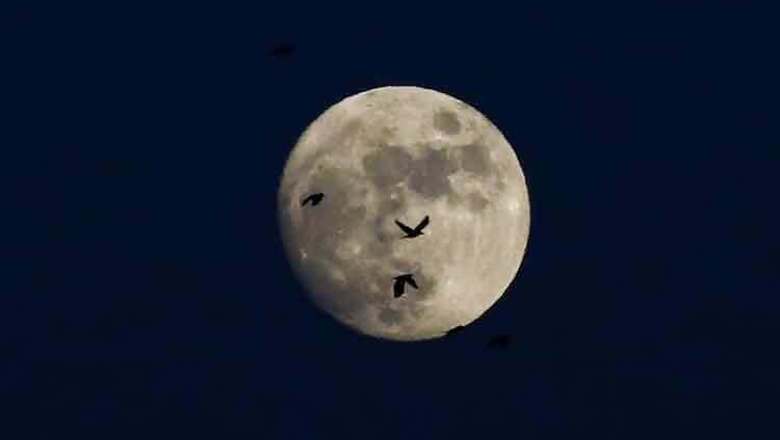
views
Los Angeles: The Moon was formed by a violent, head-on collision between the early Earth and a "planetary embryo" called Theia about 100 million years after our planet formed, a new study has found.
Scientists had already known about this high-speed crash, which occurred almost 4.5 billion years ago, but many thought the Earth collided with Theia at an angle of 45 degrees or more - a powerful side-swipe.
The study substantially strengthens the case for a head-on assault, researchers said.
Researchers from University of California, Los Angeles (UCLA) analysed seven rocks brought to the Earth from the Moon by the Apollo 12, 15 and 17 missions, as well as six volcanic rocks from the Earth's mantle - five from Hawaii and one from Arizona.
The key to reconstructing the giant impact was a chemical signature unveiled in the rocks' oxygen atoms. Oxygen makes up 90 per cent of rocks' volume and 50 per cent of their weight. More than 99.9 per cent of Earth's oxygen is O-16, so called because each atom contains eight protons and eight neutrons.
However, there also are small quantities of heavier oxygen isotopes: O-17, which have one extra neutron, and O-18, which have two extra neutrons.
Earth, Mars and other planetary bodies in our solar system each has a unique ratio of O-17 to O-16 - each one a distinctive "fingerprint."
"We don't see any difference between the Earth's and the Moon's oxygen isotopes; they're indistinguishable," said lead author Edward Young, a UCLA professor.
The fact that oxygen in rocks on the Earth and our Moon share chemical signatures was very telling, Young said. Had Earth and Theia collided in a glancing side blow, the vast majority of the Moon would have been made mainly of Theia, and the Earth and Moon should have different oxygen isotopes, he said.
A head-on collision, however, likely would have resulted in similar chemical composition of both Earth and the Moon. "Theia was thoroughly mixed into both the Earth and the Moon, and evenly dispersed between them. This explains why we don't see a different signature of Theia in the Moon versus the Earth," Young said.
Theia, which did not survive the collision was growing and probably would have become a planet if the crash had not occurred, Young said.
Another interesting question is whether the collision with Theia removed any water that the early Earth may have contained.
After the collision - perhaps tens of millions of year later - small asteroids likely hit the Earth, including ones that may have been rich in water, Young said. Collisions of growing bodies occurred very frequently back then, he said, although Mars avoided large collisions. The research was published in the journal Science.


















Comments
0 comment